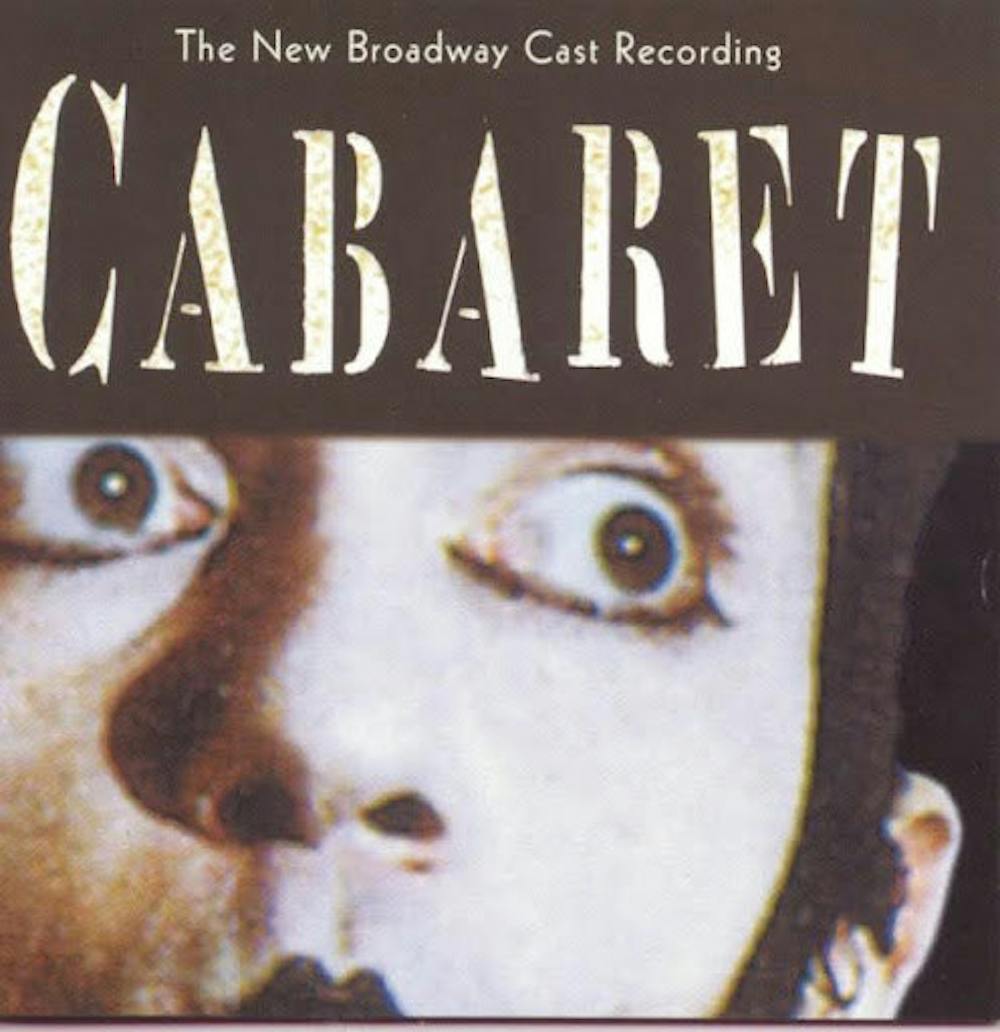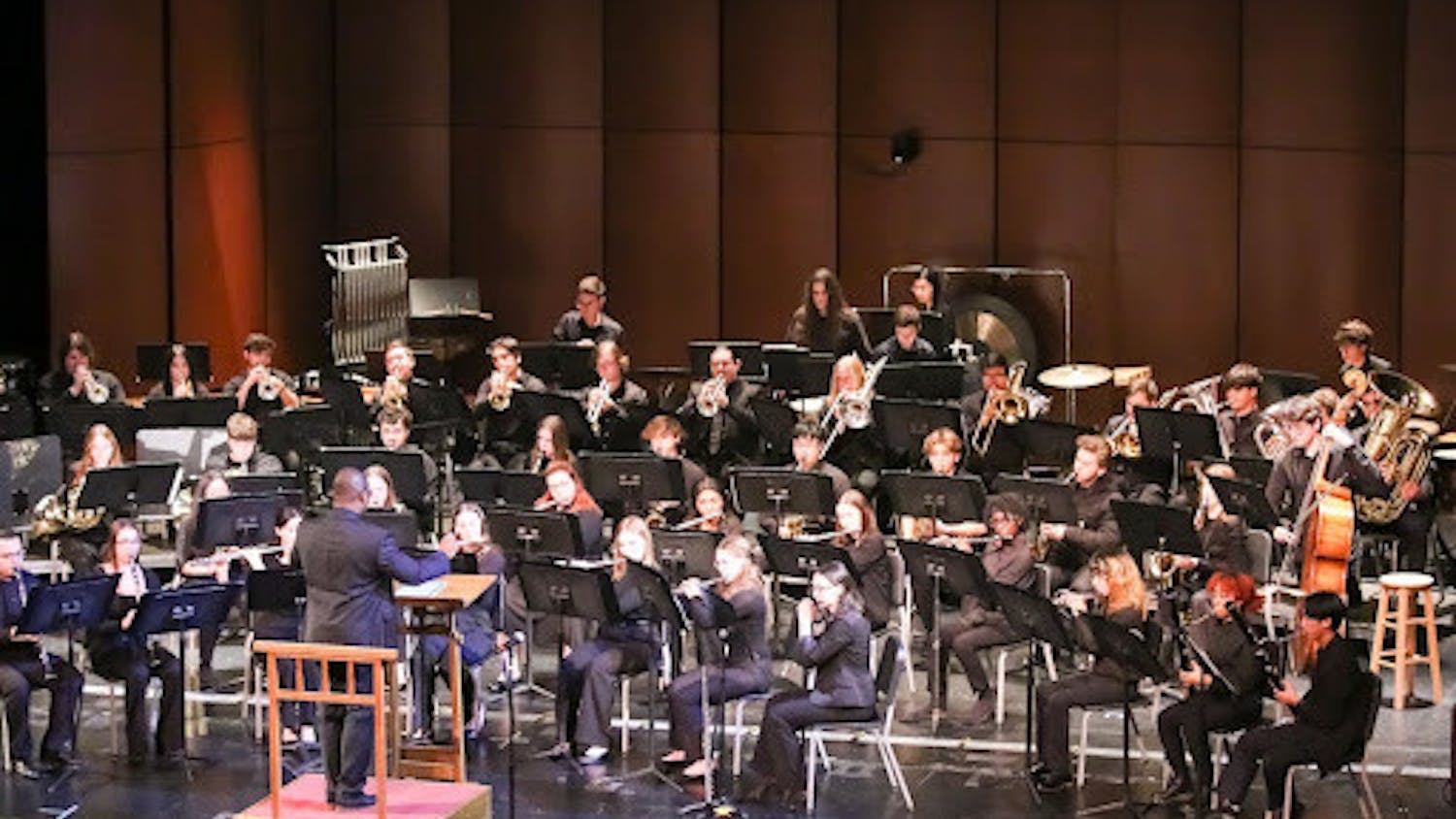By Ashley Ragone
Staff Writer
“Willkommen! Bienvenue! Welcome!”
From the moment I stepped through the doors of the August Wilson Theater on Broadway, I was immersed in the vibrant, underground club scene of 1920s Berlin. A short walk down a neon-lit alley, pulsating with heavy bass music, sets the tone as patrons are led to the intimate performance space “Cabaret” offers.
While exploring the offerings of the theater, including three separate bar offerings and merch stands, one may notice a recurring eye motif splashed across the walls. In an interview with Architectural Digest, scenic designer Tom Scutt shared his choice to incorporate the pattern of eyes, reflecting the show’s “obvious themes of voyeurism and paranoia.” This attention to detail enhanced the immersion for me and was a subtle point that I was truly impressed with.
Once seated at a stage-side table with my guest for the night (my mom), I was blown away by the immediate engagement among the ensemble members of the cast. Actors intermingled with the audience, calling individual tables and engaging in conversation.
I was able to speak with Rosie, one of the ensemble cast members, sharing my thoughts on the production and my circumstances for seeing the show. The highly interactive nature of the show truly stood out to me and transcended the typical definition of a Broadway performance.
As soon as Adam Lambert made his entrance onto the circular stage as the Emcee, he was nothing short of unrecognizable. Finishing in second place on American Idol in 2009, the now-frontman for the rock band Queen was dazzling. Dressed in shimmering eye makeup and a party hat, he truly embraced the character, embodying a vibrant yet haunting stage presence. His portrayal starkly contrasted with original cast member Eddie Redmayne’s interpretation, which leaned more subdued and introspective.
While Redmayne brought out the melancholy and darkness behind the Emcee with minimal makeup, Lambert infused his performance with electrifying energy and an unmatched level of theatricality, strongly reminiscent of Frankenfurter from “Rocky Horror Picture Show.”
Auli’i Cravalho, best known for her role as the voice of the titular character in Disney’s “Moana,” takes a sharp turn from her island princess roots. In the role of Sally Bowles, she is transformed into a loud, vibrant woman full of spunk. She commands the stage in her solo cabaret numbers, including the scandalous “Don’t Tell Mama” and the angry “Mein Herr.”
At the top of the show during “Willkommen,” Lambert’s commanding stage presence quickly captivated the audience. He seamlessly blends the charm and creepy undertones of the Emcee role, both seductive and absurd. Redmayne had a slightly more reserved approach, which I felt held back some of the authenticity that the stage commands. Lambert invited the audience to dance along with him and find comfort in the seedy Kit Kat Club.
In Cravalho’s “Maybe This Time,” a hopeful ballad that reflects on lost and unfulfilled dreams, the audience went silent. Her vocal prowess and emotional depth were overwhelming and absolutely powerful. The song is raw and intense, and although I did not have the chance to see Gayle Rankin in the role, I thought Cravalho dominated it.
For both Lambert and Cravalho, one of the most significant differences lies in the queerness charged into the performances. They both embrace their character’s fluidity, navigating the nuances of gender and sexuality with confidence and grit.
This choice created an even more powerful juxtaposition in the context of the social upheaval in Germany as they slowly succumbed to the Nazi Party’s rule. As the reveal of the Emcee’s darkness and Sally Bowles’ loss of identity comes to light, the audience becomes aware of the fragility of individuality in the show.
Casting Lambert and Cravalho as the Cabaret leads was a fantastic choice. Their overall stage presence and chemistry are fantastic, and the show transcends the expectations for a typical Broadway performance.
The show is a revelatory experience that challenges the underground society of Berlin within the approaching Nazi regime. The celebration of queerness and gender expression within such a dark period of history is a bold choice, but it truly invites the audience into a once-in-a-lifetime party. These performances are a must-see for musical theater-enjoyers and new audiences alike.







